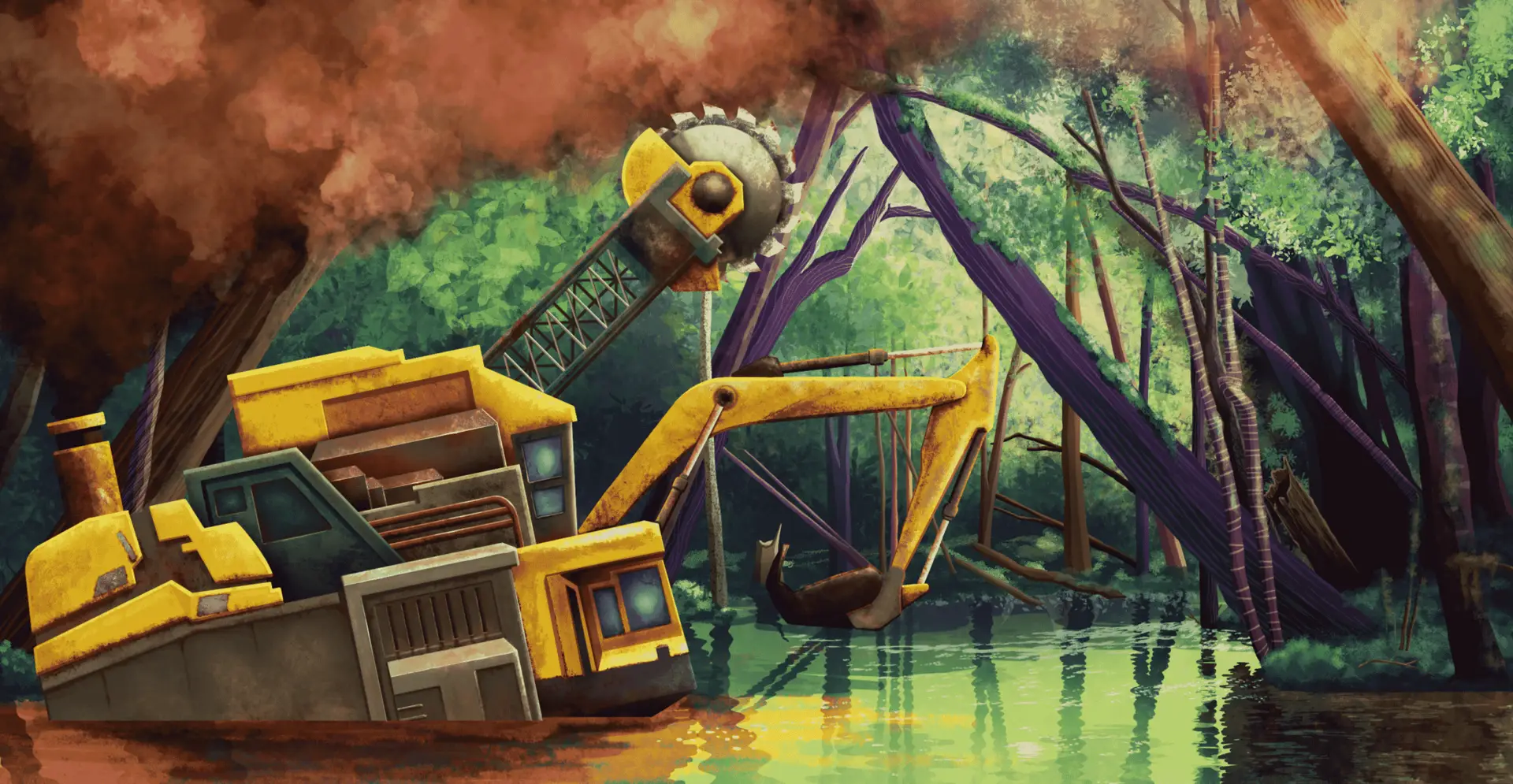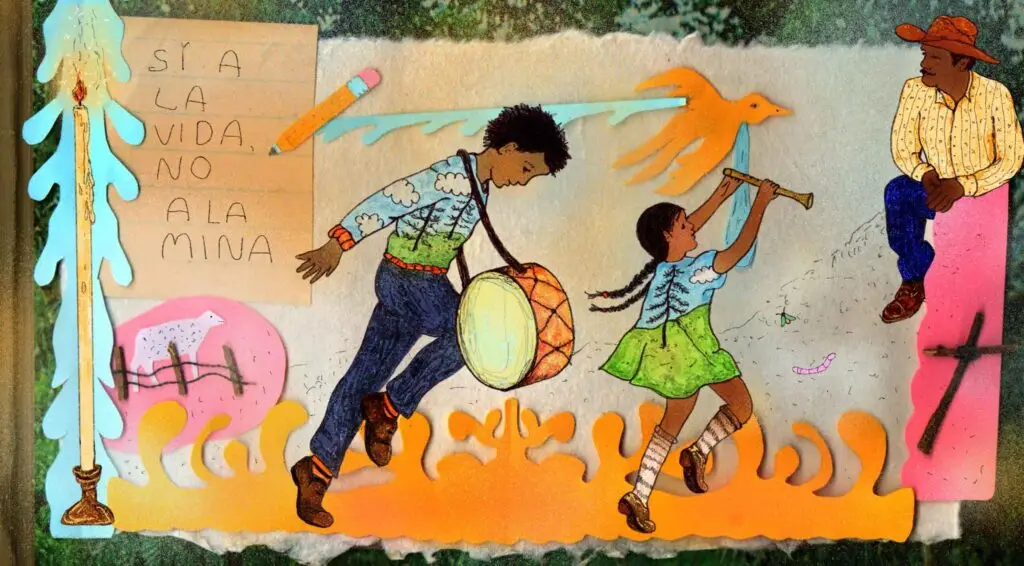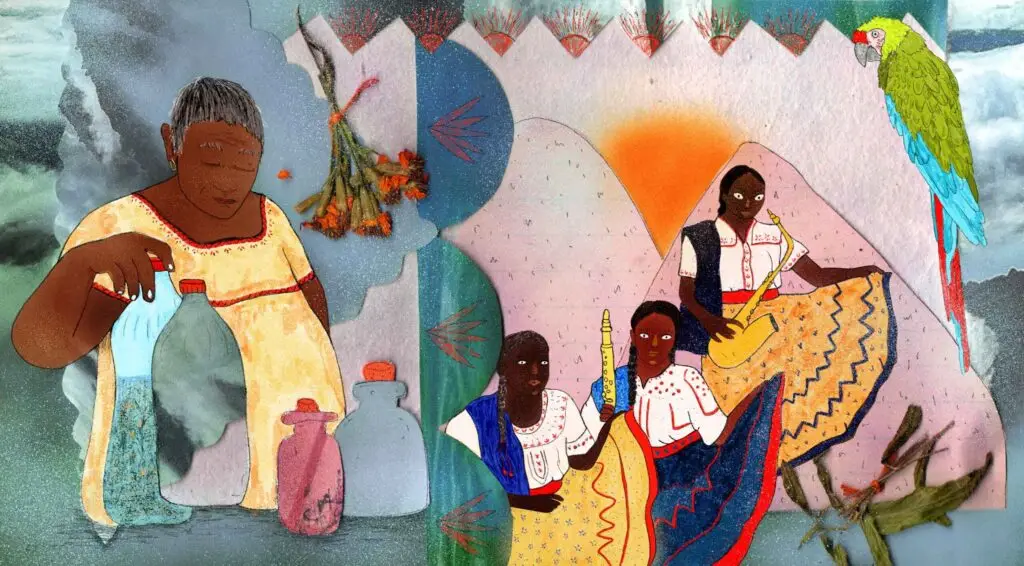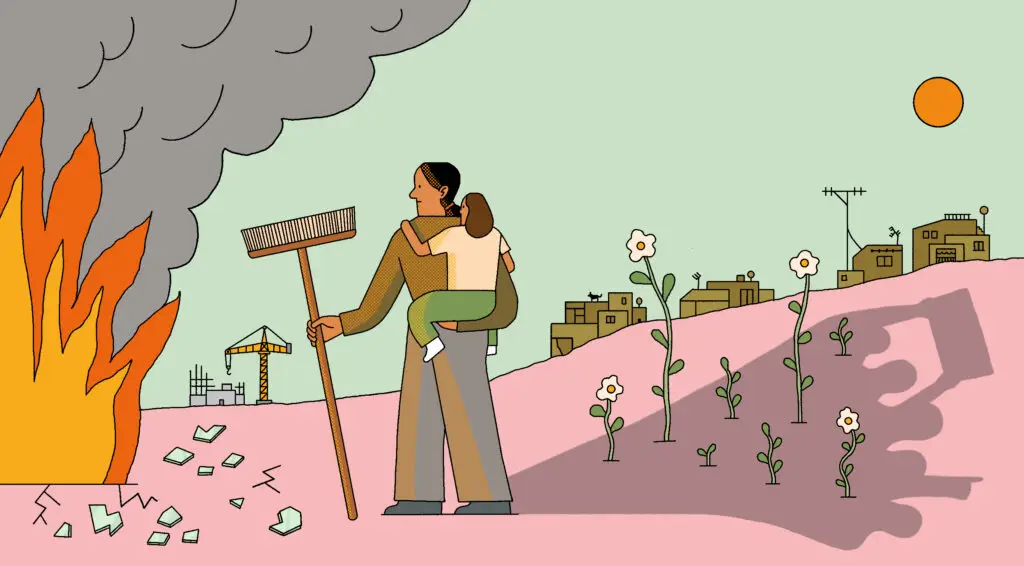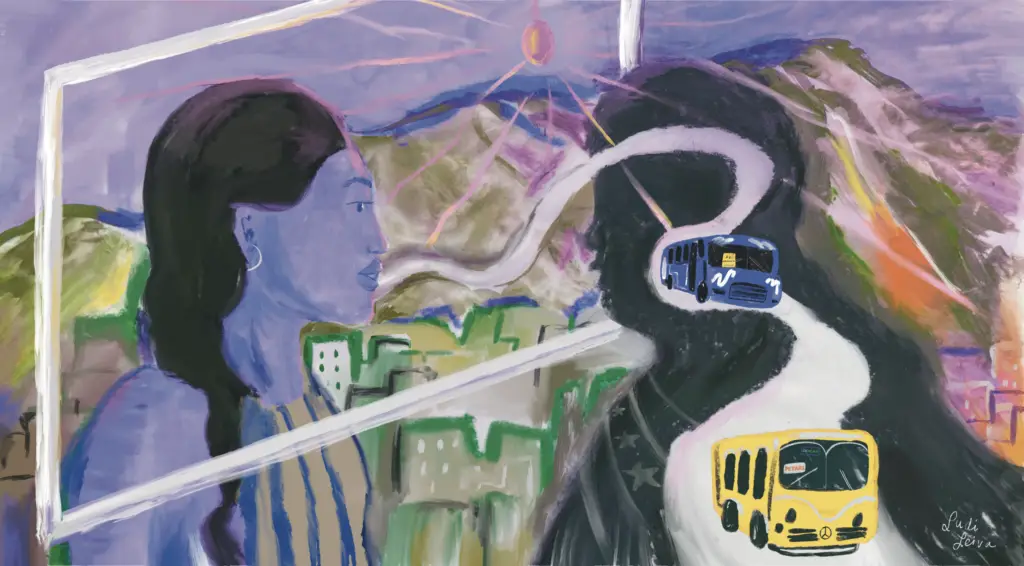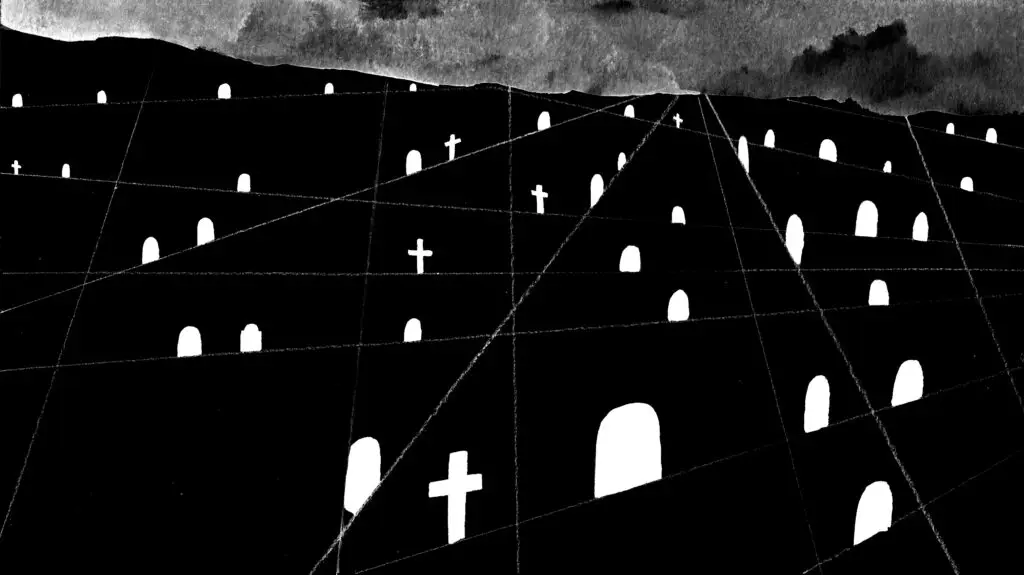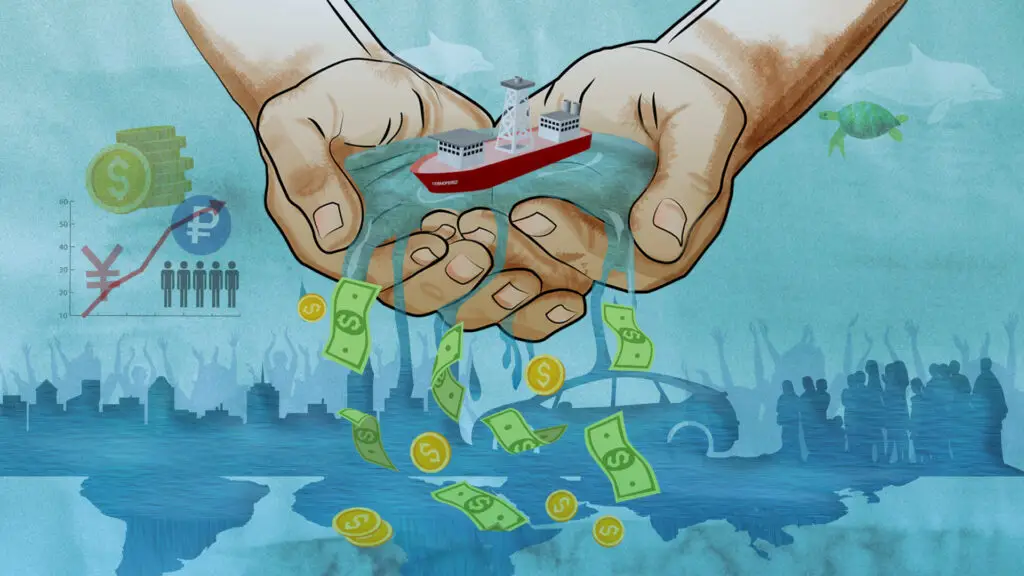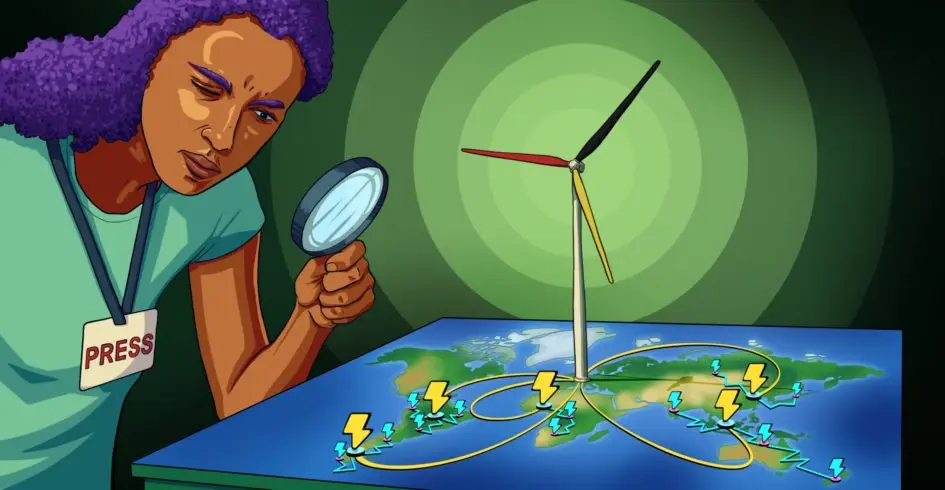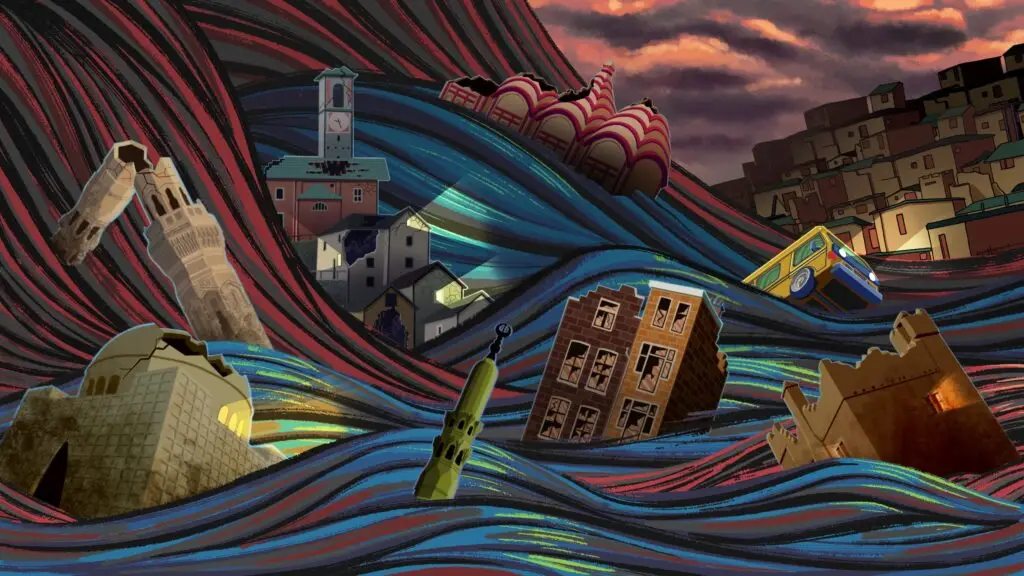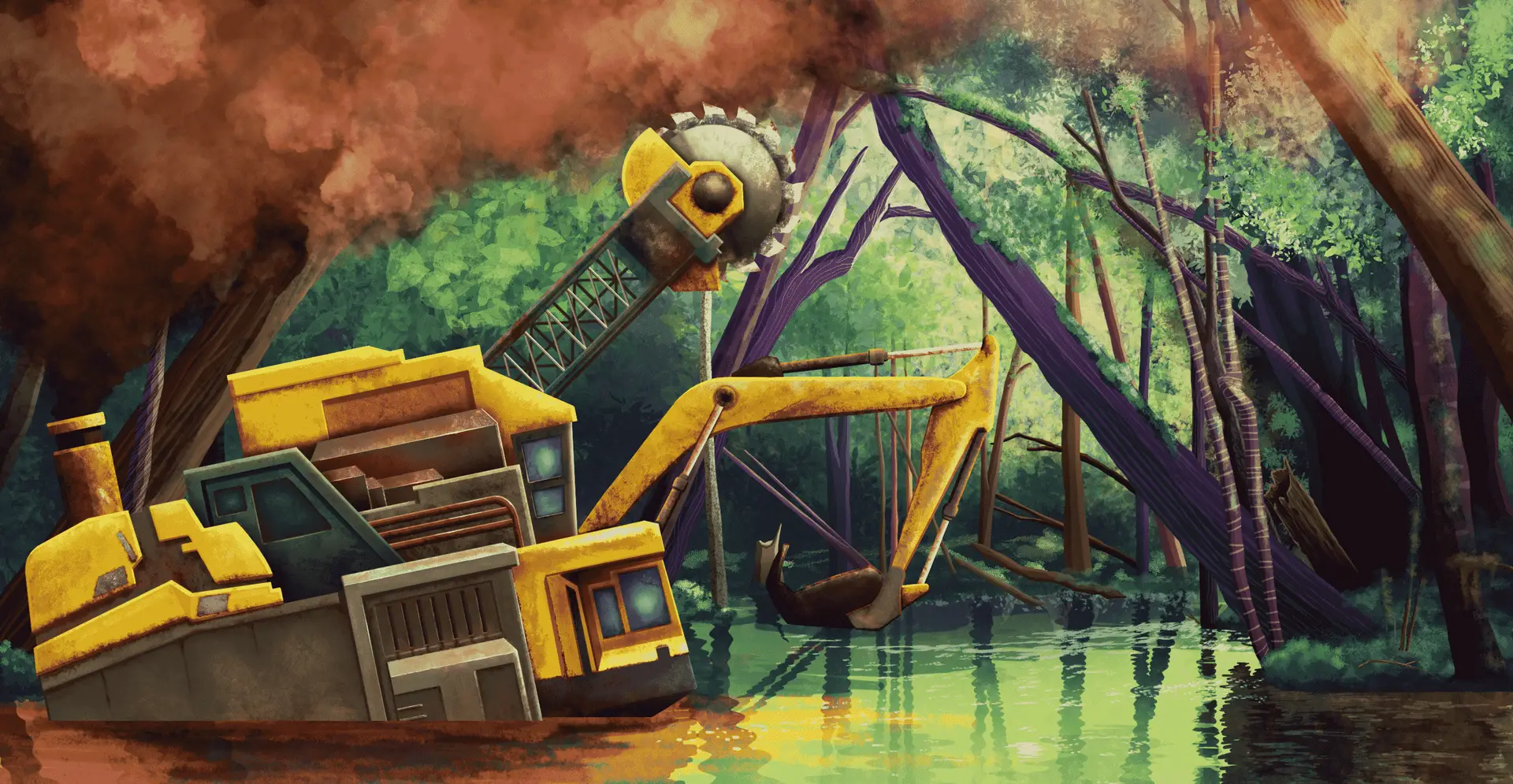
How Russia’s invasion of Ukraine is echoing in the Amazon
- Written by Juliana Faddul
- Edited by Tina Lee
- Illustration by Walker Gawande
Brazil’s president is using concerns over energy independence generated by the conflict in Ukraine as a pretext to mine on protected indigenous land in the Amazon.
Russia may be attacking Ukraine more than 10,000 kilometers from Brazil, but the noise that President Vladimir Putin is making around the world is increasingly deafening here in Brazil – especially in the Amazon rainforest.
The connection between the largest tropical forest in the world and Eastern Europe is not so obvious at first – besides the geographic width, there are many other social, economic and cultural differences. However, riverine people, indigenous people and forest dwellers are being hit in as cowardly a way as the Ukrainians.
Since the beginning of March, President Jair Bolsonaro has used the conflict between Russia and Ukraine as a pretext to allow mining on indigenous lands and environmental reserves.
The government claims this kind of approval could end Brazil’s dependence on imported fertilizers from countries such as Russia and Belarus, since there are reserves of potassium in the territories – the main raw material used in chemical compounds.
However, a study by the non-governmental organization Socio-environmental Institute (ISA, in Portuguese), carried out with requests for mine exploration made to the National Mining Agency (ANM, in Portuguese), shows that only 1.6% of the reserves for potassium are located on indigenous lands. In the case of phosphate (another important raw material), the figure is even lower: 0.4%.
The survey illustrates the president’s move is nothing more than an excuse to legalize illegal mining and end environmental reserves, since most of the national potash reserves are outside the Legal Amazon area.
A pretext for expansion
“Amazônia Legal”, as it is called in Portuguese, has an approximate area of 5,217,423 km and corresponds to about 61% of the Brazilian territory. It’s formed by the states of Acre, Amapá, Amazonas, Pará, Rondônia, Roraima, Tocantins and Mato Grosso, and also by some cities in Maranhão.
According to the ISA study with data from the ANM, the Brazilian states with the greatest presence of raw material are in urban areas in the Southeast, more precisely in the states of Minas Gerais (837.5 million tons) and São Paulo (18.6 million tons). For those who are not used to Brazilian geography, it is important to say that São Paulo and Minas Gerais are the most populous states in the country, with over 46 and 21 million inhabitants, respectively. Not to mention that São Paulo is also where important entrepreneurs and players in the financial market are located.
Researchers from the Laboratory of Environmental Services Management (LAGESA, in Portuguese), which is part of the Federal University of Minas Gerais, are also studying the topic. The research has not yet been concluded, but according to the preview, the potash reserves located outside the Legal Amazon are estimated at 1.15 billion tons, which would be enough to guarantee Brazil’s supply until 2089.
To add more spice to the debate, the bill that allows mining on indigenous lands and environmental reserves was delivered to the congress on February 5, 2020 -in his second year of presidential term. Almost two years ago, long before Russia attacked Ukraine.
Echoes of Belo Monte
In addition to the exploration of minerals, the bill would allow the exploration of hydrocarbons to take advantage of water resources for the generation of electricity. This is a very sensitive issue not only for indigenous and riverside communities, but for Brazil as a whole, since the country still feels the impacts of the Belo Monte hydroelectric disaster.
The Belo Monte hydroelectric plant was one of the largest constructions ever built in Brazil, with the promise of delivering more than 11,000 megawatts of energy. To build the sumptuous project (the work started in 2011 and the first part was delivered in 2016), it was necessary to build a reservoir in an area of 478 km in the heart of Pará -some part of the Legal Amazon area.
Due to the construction of the hydroelectric plant, the population of Altamira (the municipality where the hydroelectric plant is located) jumped from 100 thousand inhabitants to more than 140 thousand, in a matter of days. And it wasn’t just the demographic census that shot up: with it came the high levels of violence, which made Altamira lead for years in the ranking of the most dangerous cities in Brazil. Weapons, fights, bombs, wounded victims, human rights violations. A scenario quite similar to what we are seeing on the other side of the world.
All this effort never resulted in major gains for the country. From the 11,000 megawatts promised, the hydroelectric plant produces only 4,500 megawatts.
Besides, most of its production is still being delivered to the Southeast (where São Paulo and Minas Gerais are located) and Midwest (where most of the agribusiness is located). Ironically, Pará is the state where people have both the least access to electricity from Belo Monte (they still live with lamps and diesel generators) and pay the most for electricity.
What Bolsonaro and Putin share
Anthropologist Eduardo Viveiros has asserted a very striking phrase: “The indigenous people are specialists in the end of the world, since theirs ended in 1500,” referring to the year the Portuguese landed in Brazil. However, not all living beings on this planet have this strength to resist, reinvent and be reborn.
The journal Nature Climate Change published an article on March 7th arguing that, thanks to global warming and unrestrained deforestation, the forest may lose its ability to regenerate sooner than previously thought.
The average temperature of the planet has already risen 1.1ºC since the Industrial Revolution and deforestation in the Amazon is approaching 20% of its area, according to the National Institute for Space Research (INPE, in Portuguese), whose monitors point out the deforestation by satellite.
Bolsonaro’s trip to Russia has become notorious because it was one of the few international visits he’s made during his presidential term. However, one doesn’t need to be trained in psychology to notice that their friendly relationship refers to a denial of the present and nostalgia for a past that never really existed. As Eliane Brum wrote in her book ‘Banzeiro Okoto’, this happen because “they have no future to offer”.
Related Posts

Capulálpam de Méndez: A struggle for land and memory
After a Canadian mining company challenged a Zapotec community’s Indigenous identity, recalling the ancestral names of sacred landmarks helped reinvigorate their connection to the land – and defend it from extractive industries.

San Pedro Sochiapam: First the birdsong, then the whistles
In a remote community enveloped in cloudforest, a whistled form of the Indigenous Chinantec language is perfectly adapted to the land and its weather. But who needs whistles when you can use WhatsApp?
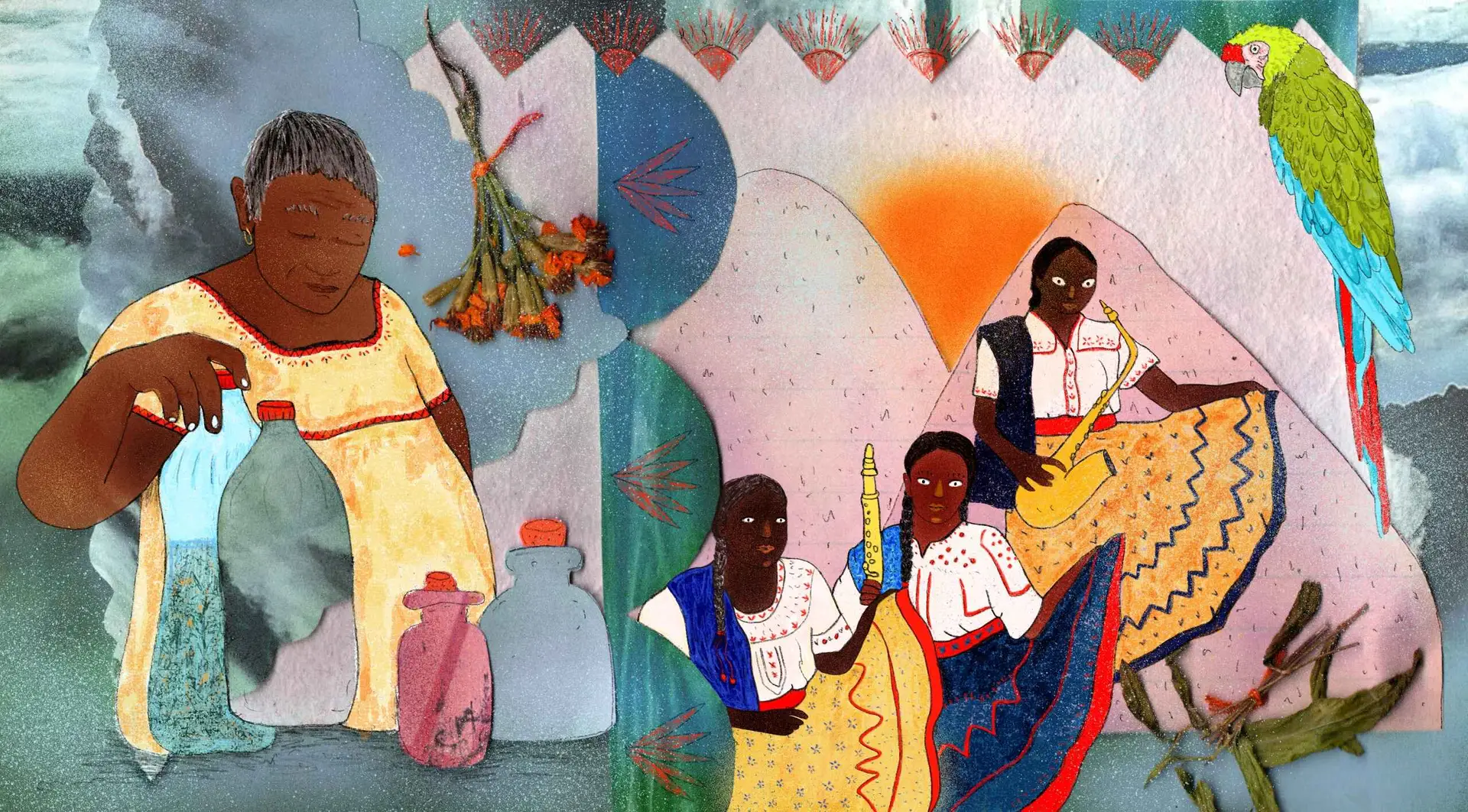
Sierra Mixe: A conversation with Mother Nature
Medicinal wisdom is embedded in Indigenous Mixe languages. By sustaining their mother tongue and practices involving herbs and healing rituals, Mixe people keep alive a cosmovision in which they speak to Mother Earth.
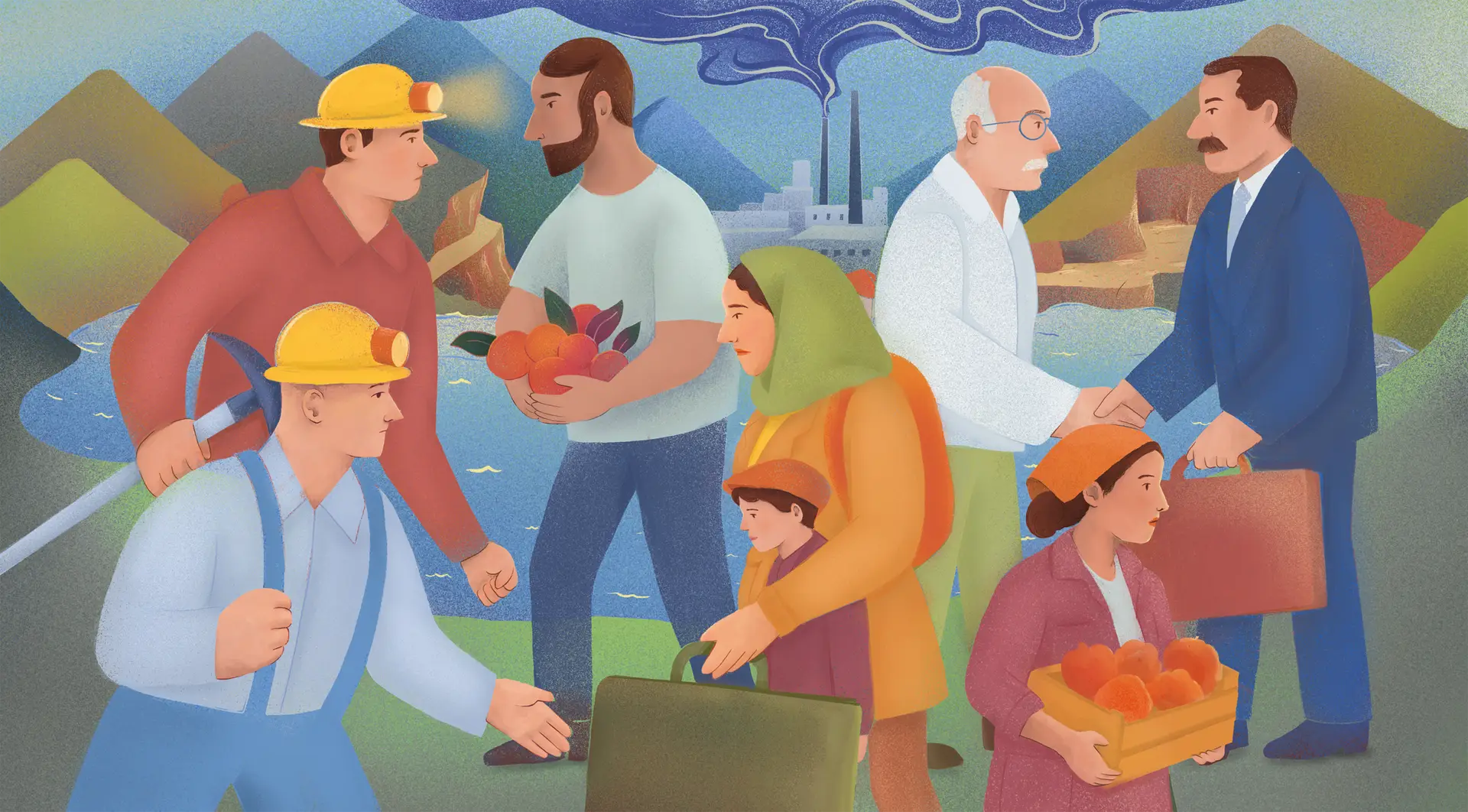
Foreign capital, local burden: Who benefits from mining in Bosnia?
When foreign companies restarted mining operations that had been shuttered since the breakup of Yugoslavia, Vareš had high hopes of economic revival. But as the state fails to take a stand against pollution and deforestation, optimism has given way to nostalgia for the socially owned mines of the communist era.
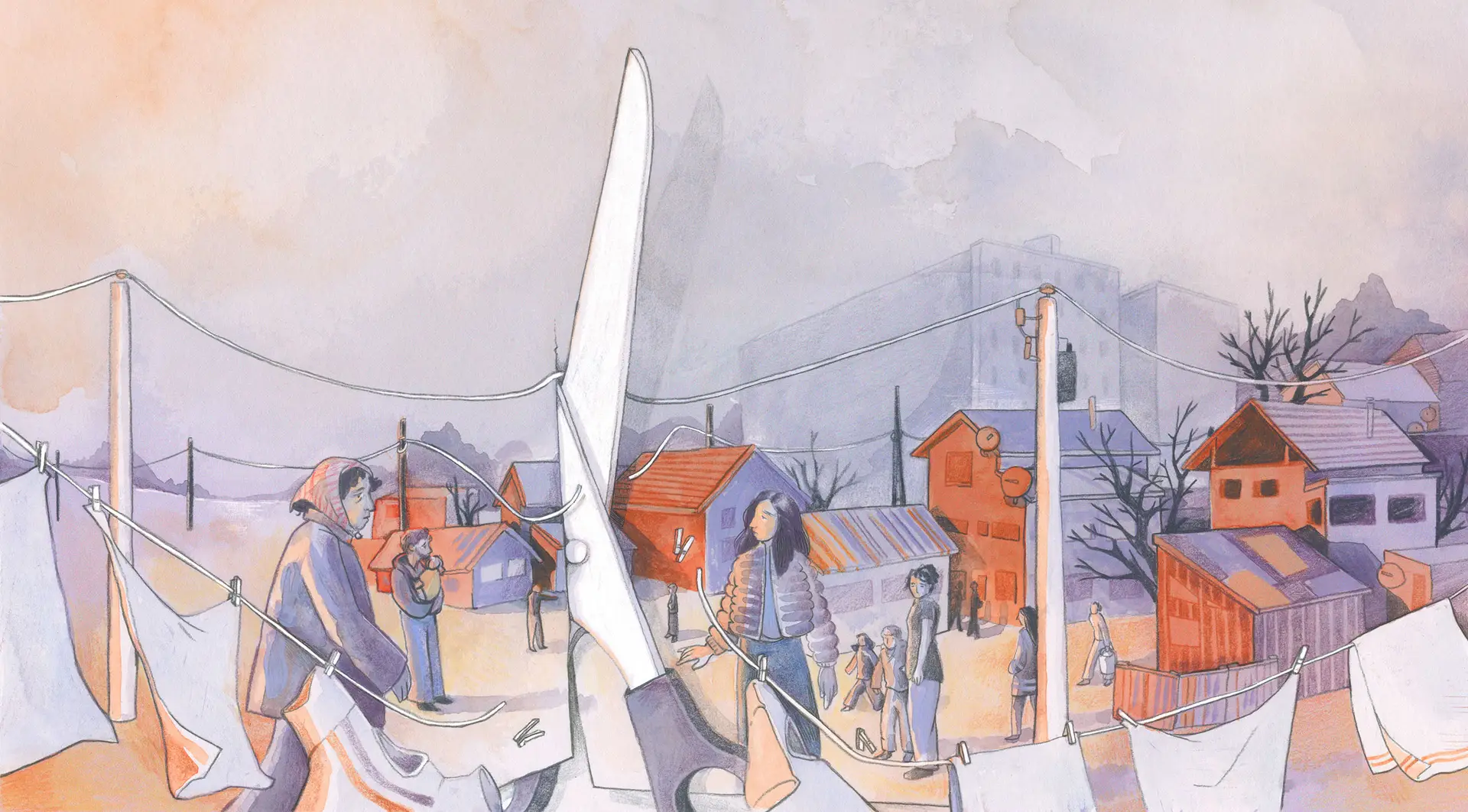
“We can only get out of here if we die”: How EU funds to help Roma communities are reinforcing isolation, prejudice and exclusion
Roma people are routinely excluded from jobs, housing and public services. Yet tens of billions of euros to promote Roma inclusion are vanishing into projects with no transparency or measurable impacts. Our investigation found evidence of some of this EU money being spent on displacing or demonizing Roma communities in Hungary, Bulgaria, Czechia and Italy.

